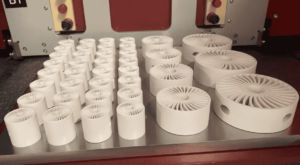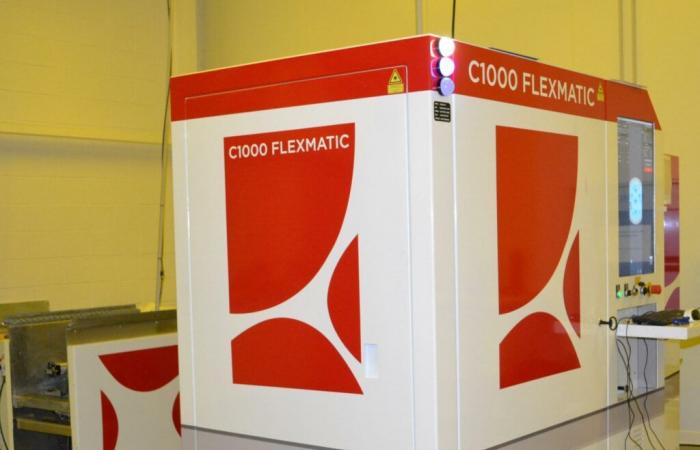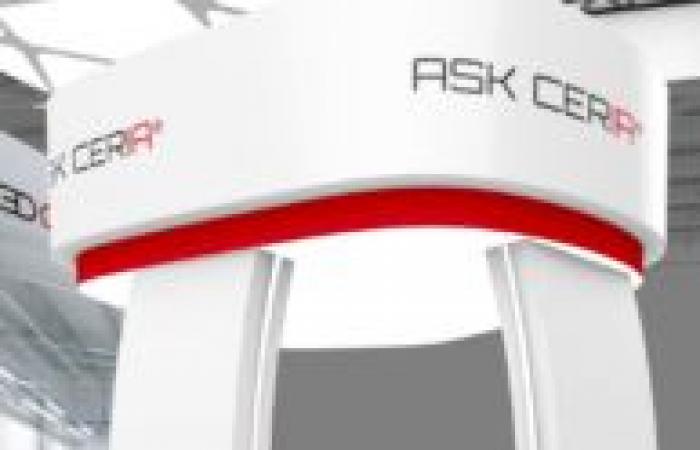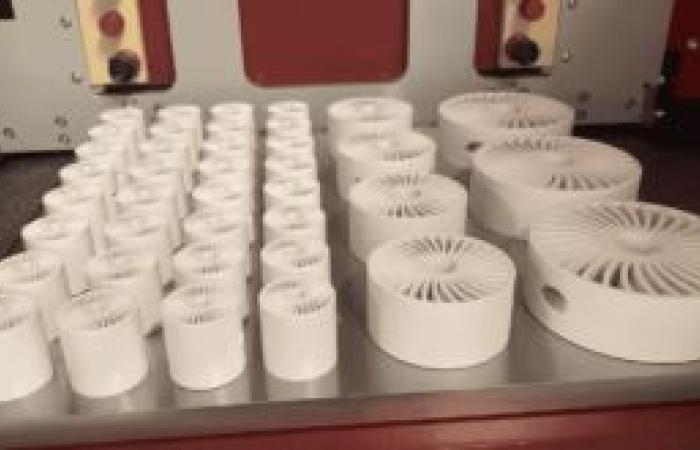“Better, faster, cheaper. » Three words that every manufacturer seeks to use to describe their production on an industrial scale – regardless of the additive manufacturing processes they use. The fact is that the quest for industrialization seems obvious when using certain additive manufacturing technologies, while others do not always receive the credit they deserve. In the wide range of additive manufacturing processes that are growing in popularity, a conversation with 3DCeram highlights the possibilities that stereolithography (SLA) to achieve industrial-scale production.
Recognized for manufacturing ceramic 3D printers based on stereolithography (SLA), the offering of 3DCeram has evolved to support customers throughout the value chain. Although we have covered multiple apps of the company’s technology in the healthcare, aerospace and energy sectors, SLA 3D printing does not enjoy the same reputation as other widely used AM processes. This lack of understanding of this process makes it difficult to consider it for industrialization or mass production – not to mention the fact that SLA can enable applications for 3D printing of ceramics.
« Manufacturers looking for 3D printing production solutions generally do so driven by a specific project », Explains the 3DCeram team straight away. “ This means that more and more manufacturers are considering additive manufacturing as a production tool in its own right. But some are a little lost in the face of the diversity of the technological offering. Let’s admit that there is a proliferation of technologies (extrusion, FFF, DLP, Binder Jetting, Stereolithography, etc.) coming from the academic sector, but this often confuses industrialists. This lengthens their journey ».
According to the 3DCeram team, ALS has a reputation for being a “ slow process “. On the other hand, this technology “ offers the possibility of printing very large surfaces thanks to top-to-bottom printing [et] is more easily automated ».
Key considerations when moving to industrialization
For those unfamiliar with 3DCeram’s technology, it’s worth noting that in a top-down build process, layers are built from the bottom up, minimizing the need for numerous supports. Once the printing process is complete, the parts are cleaned, and having fewer supports simplifies and speeds up the process, while reducing the risk of waste due to potential breakage when removing the support.
Over time, this process has been improved to incorporate automation and artificial intelligence (AI). These features, along with the ability to produce large parts, have become key considerations when transitioning to industrialization.
« SLA technology offers significantly large production surfaces, with the possibility of adding lasers and improving print speed “, said 3DCeram. In addition to this critical advantage for manufacturers seeking mass production, the company’s systems are large enough to print either many small parts or one large part.
Furthermore, process automation is essential if we want to reach manufacturers, and 3DCeram already offers partial process automation. “ Our 3D printers feature a formulation supply system with a pressure pot. At the exit of the C1000 FLEXMATIC printer, there is a recycling station which allows the recovery of the unpolymerized formulation, which then returns to the production cycle. The printing surfaces of 3DCeram CERAMAKER printers offer the possibility of printing very large parts. For example, with the C3601 ULTIMATE whose platform is 600*600*300 mm, there is considerable space for printing large [pièces] and in ONE PIECE », adds the company.
Regarding AI, 3DCeram recently developed a solution to optimize printing quality and time. Baptized CERIAit can be deployed in several stages.
« To begin with, CERIA Set analyzes the part and the VAT to suggest adjustments and generate optimized parameters. This means that it will cross-reference incredible amounts of data to do a comprehensive analysis and anticipate all areas for improvement. Once all adjustments are made, CERIA generates ready-to-use print settings for CERAMAKER printers. The operator just has to start printing.
This new tool is a major asset for a manufacturer because it meets the need to secure its production process. In fact, all knowledge is no longer held by an employee who could decide to leave the company. The risk of disruption in the production chain is then eliminated.
Another major contribution of CERIA is the time saving in terms of iterations. We know that, as in any industrial process, there are rejections or failures. The contribution of CERIA is considerable here, since it produces savings in time, raw materials and machines.
3DCeram will launch an additional module to its artificial intelligence, CERIA Live, at the end of 2024. This module concerns real-time control during printing. CERIA analyzes the previous 3 layers to anticipate any events that could occur in the following 5 layers in order to intervene to make the necessary adjustments. The idea is to control all parameters in real time to optimize printing time ».
With the increasing use of artificial intelligence in all areas of the manufacturing chain, 3DCeram demonstrates that it is examining current market developments to help vertical industries produce cost effectively – better, faster and cheaper .
Non-technical barriers and applications

While the focus is often on technical capabilities, the reality of production also reveals that lack of knowledge in large factories, uncertainty about what to produce with a given technology or even the transition from Small-scale AM to larger-scale AM are also key challenges for AM industrialization – challenges that 3DCeram can help address because, in two decades of experience in the field, the company has evolved from parts manufacturer to 3D printer manufacturer.
It is therefore also well placed to demonstrate the capabilities of its solutions – particularly with AI providing the ability to analyze and control the entire AM process.
« All technical ceramics manufacturers will benefit from optimizing AM processes through artificial intelligence and automation. Manufacturers can finally design parts based on the properties they are looking for, rather than being constrained by the traditional processes available in their workshops. The barriers are falling and manufacturers are becoming more and more attentive. At the forefront are all productions related to questions of sovereignty and confidentiality. We see that these questions are more and more numerous and more and more present », underlines 3DCeram.
If the company’s solutions can lead to applications in semiconductor sectorsof the defense and aerospace – to name just a few – it is crucial to continue to contextualize each application to get the most out of the technology.
Editor’s notes
Visitors to the Formnext 2024 show were able to discover CERIAthe artificial intelligence and 3D printing assistant for technical ceramics from November 19 to 22, 2024 in Hall 11.1 Stand D21.
This content was created in collaboration with 3DCeram. Quotes have been edited for clarity.
Remember that you can post for free AM industry job offers on 3D ADEPT Media or search for a job via our job board. Do not hesitate to follow us on our social networks and subscribe to our weekly newsletter: Facebook, Twitter, LinkedIn & Instagram!
I like this:
I like loading…








